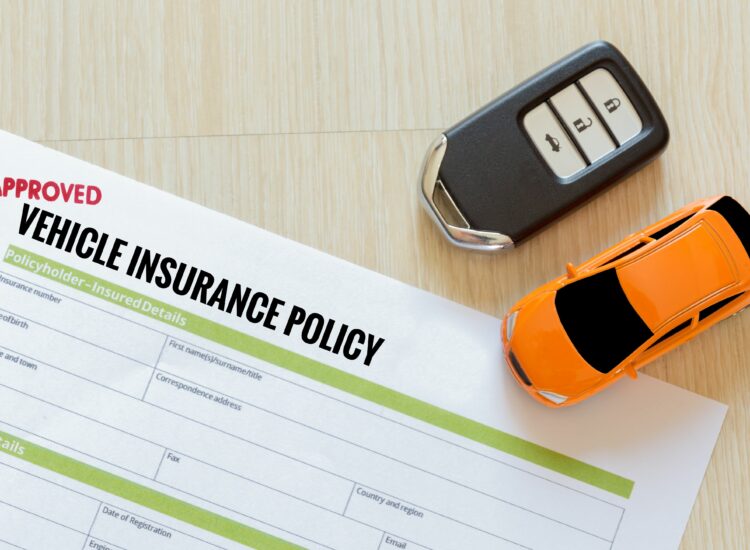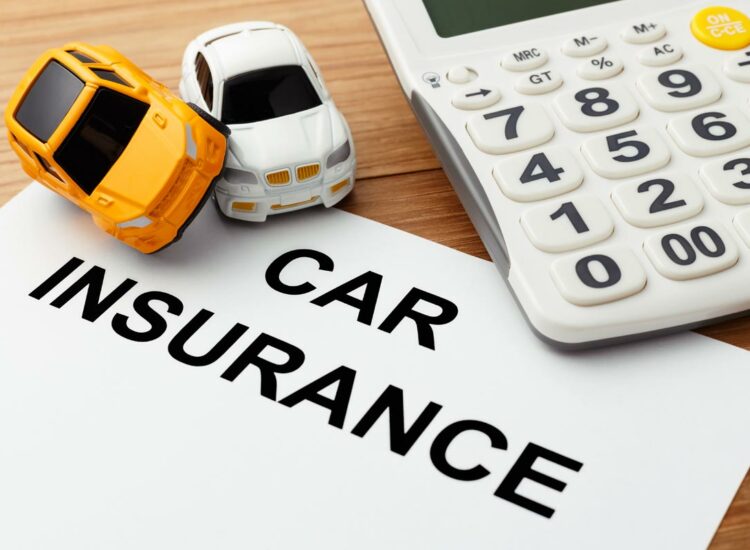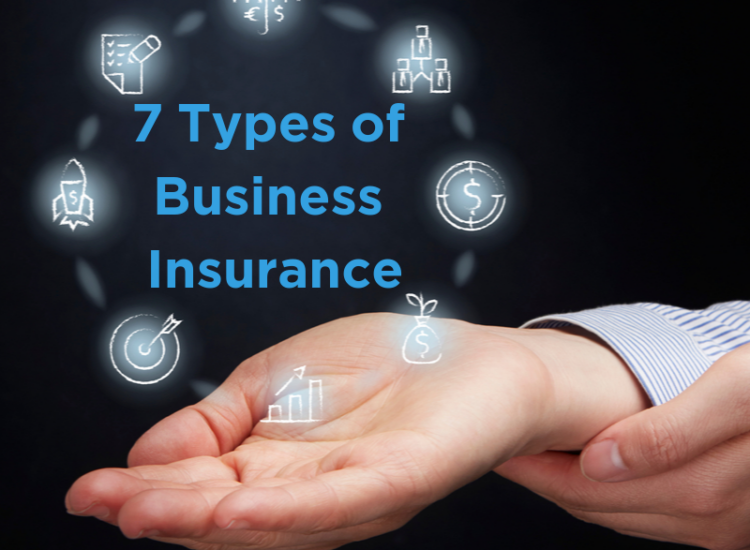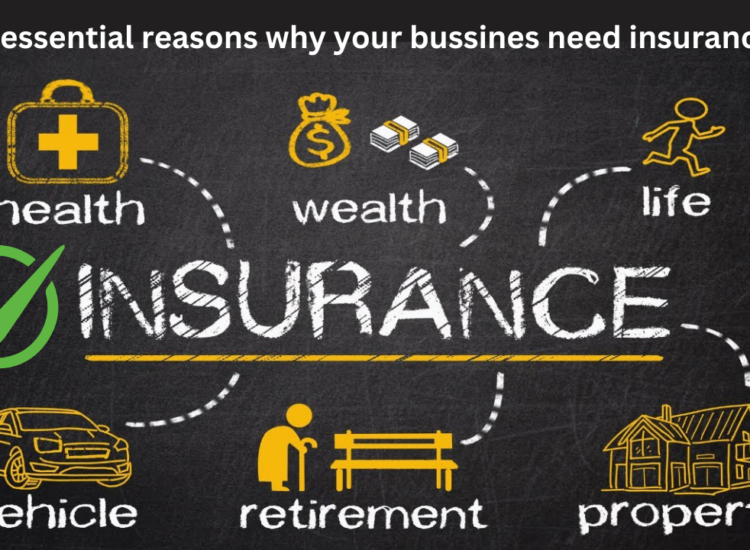Navigating the Complex World of Insurance Companies and Auto Insurance
In the realm of personal finance and responsible vehicle ownership, understanding the intricacies of insurance companies and auto insurance is paramount. Whether you’re a seasoned driver or a new car owner, navigating the landscape of insurers and coverage options can often feel overwhelming. This comprehensive guide aims to demystify the process, providing you with the knowledge to make informed decisions about your auto insurance needs and choose the right insurance company to protect your assets and peace of mind.
Toc

Understanding the Landscape of Insurance Companies for Your Auto Insurance Needs
The auto insurance market is populated by a wide array of insurance companies, each with its own structure, offerings, and approach to customer service. Recognizing the different types of insurers available is the first step in making a well-informed choice.
Understanding the Different Types of Auto Insurance Companies
When seeking auto insurance, you’ll encounter various types of insurance companies vying for your business. Primarily, these can be categorized as national versus regional providers, and direct writers versus independent insurance agents.
National vs. Regional Auto Insurance Providers
National insurance companies are large, well-established organizations with a broad geographic reach. They typically offer a comprehensive range of insurance products, including auto insurance, homeowners insurance, and more, catering to a diverse clientele across the country. These companies often have significant financial resources and brand recognition. However, their policies and customer service might sometimes feel less personalized due to their sheer size.
On the other hand, regional insurance carriers operate within specific geographic areas. They may have a deeper understanding of local nuances and offer more tailored policies to meet the specific needs of drivers in their region. While they might not have the same brand recognition as national players, regional insurers can often provide more personalized customer service and competitive rates within their operating area. Choosing between a national and regional insurer often comes down to prioritizing convenience, local expertise, or potentially more competitive regional pricing.
Direct Writers vs. Independent Insurance Agents
Another key distinction lies in how insurance companies distribute their auto insurance products. Direct writers are companies that sell their policies directly to consumers through their own employees, online platforms, or over the phone, effectively cutting out the middleman. Examples of well-known direct writers include GEICO, Progressive, and Liberty Mutual. While this direct approach can sometimes lead to lower premiums and a streamlined purchasing process, it means you are limited to the products offered by that specific company.
In contrast, independent insurance agents work with multiple insurance companies. They act as brokers, offering you a variety of auto insurance policies from different providers. This allows them to shop around on your behalf to find the best coverage at the most competitive price for your individual needs. Independent agents can provide personalized advice and act as your advocate when dealing with claims. While their services might come with a commission, the ability to compare multiple options and receive unbiased advice can be invaluable.
Key Factors to Consider When Choosing an Auto Insurance Company
Selecting the right insurance company for your auto insurance needs involves more than just comparing price. Several crucial factors should be taken into account to ensure you receive adequate coverage and a positive experience.
Financial Stability and Reputation of the Insurer
The financial stability of an insurance company is a critical consideration. You want to choose an insurer that has the financial strength to pay out claims when they arise. Independent rating agencies like A.M. Best, Moody’s, Standard & Poor’s, and Fitch provide financial strength ratings for insurance companies. These ratings offer an assessment of the insurer’s ability to meet its ongoing insurance policy and contract obligations. Checking these ratings can provide peace of mind that your chosen insurer is financially sound.
2. https://nordics.vn/car/mmoga-auto-insurance-explained-how-to-stay-safe-and-save-money/
5. https://nordics.vn/car/mmoga-slash-your-car-insurance-costs-the-ultimate-savings-guide/
Beyond financial stability, the reputation of an insurance company is equally important. Look into customer satisfaction ratings and reviews. Websites like The Zebra often publish rankings based on customer satisfaction. Consider factors like ease of doing business, responsiveness to inquiries, and the efficiency of the claims handling process. A company with a strong reputation for customer service can make a significant difference when you need to file a claim.
Coverage Options and Policy Features Offered
The specific coverage options and policy features offered by an insurance company are paramount in meeting your individual auto insurance needs. Ensure the insurer offers the essential types of coverage you require, such as liability, collision, comprehensive, and uninsured/underinsured motorist protection. Evaluate the available coverage limits to ensure they adequately protect your financial interests in the event of a significant loss.
Furthermore, consider any additional policy features that might be important to you, such as roadside assistance, rental car reimbursement, or new car replacement coverage. Some insurance companies also offer unique features or endorsements that cater to specific needs. Carefully reviewing the policy details and understanding the exclusions is crucial before making a decision.
Customer Service and Claims Handling Efficiency
The quality of customer service and the efficiency of claims handling are critical aspects of your experience with an insurance company, especially when you need them most. Research how easy it is to contact the insurer, whether they offer multiple communication channels (phone, email, online chat), and their responsiveness to inquiries.
The claims handling process can be a significant point of frustration if not handled efficiently. Look for insurance companies known for their streamlined and hassle-free claims processes. Reading reviews and testimonials from other policyholders can provide valuable insights into their claims experience. A company that handles claims promptly and fairly can alleviate significant stress during an already challenging time.
Decoding Auto Insurance: A Comprehensive Guide to Coverage and Costs
Once you have a foundational understanding of the different types of insurance companies, the next step is to delve into the specifics of auto insurance itself, including the essential coverage options and the various factors that influence its cost.

Essential Types of Auto Insurance Coverage Explained
A standard auto insurance policy typically comprises several different types of coverage, each designed to protect you in various scenarios. Understanding these coverages is crucial for building a policy that meets your specific needs and risk tolerance.
Liability Coverage: Protecting You and Others
Liability coverage is the cornerstone of most auto insurance policies and is legally required in nearly all states. It protects you financially if you are found at fault in an accident that causes bodily injury or property damage to others. Bodily injury liability helps cover the medical expenses, lost wages, and pain and suffering of those injured in the accident you caused. Property damage liability covers the costs of repairing or replacing property damaged by your vehicle, such as another car, a fence, or a building. Liability coverage is essential for safeguarding your assets from potential lawsuits and financial burdens arising from an at-fault accident.
Collision and Comprehensive Coverage: Safeguarding Your Vehicle
While liability coverage protects others, collision coverage helps pay for damages to your own vehicle if it’s involved in a collision with another vehicle or object. This coverage applies regardless of who was at fault in the accident. Comprehensive coverage, on the other hand, provides protection for your vehicle against damages caused by non-collision events. This includes perils such as theft, vandalism, fire, natural disasters (like hail or floods), and damage caused by animals. Both collision and comprehensive coverage typically have a deductible, which is the amount you pay out-of-pocket before the insurance company covers the remaining costs.
Factors That Significantly Influence Your Auto Insurance Premiums
The cost of your auto insurance policy, known as the premium, is not a fixed amount but is determined by a multitude of factors that insurance companies use to assess risk. Understanding these factors can help you anticipate potential costs and potentially take steps to lower your premiums.
1. https://nordics.vn/car/mmoga-auto-insurance-explained-how-to-stay-safe-and-save-money/
3. https://nordics.vn/car/mmoga-how-to-find-the-best-auto-insurance-quote-and-save-big/
Driver-Related Factors: Age, Driving History, and Credit Score
Several characteristics specific to the driver significantly influence auto insurance rates. Age is a primary factor, with younger, less experienced drivers and older drivers often facing higher premiums due to statistically higher accident rates. Your driving history, including any past accidents, traffic violations (like speeding tickets), and DUI convictions, plays a substantial role in determining your risk profile and, consequently, your premium. A clean driving record typically leads to lower rates. In many states, your credit score is also considered, as insurers often correlate a good credit history with responsible behavior and a lower likelihood of filing claims.
Vehicle-Related Factors: Make, Model, and Safety Features
The characteristics of the vehicle being insured are also key determinants of auto insurance costs. The make and model of your car influence factors like repair costs, safety ratings, and theft rates, all of which impact your premium. More expensive cars or those with higher repair costs generally have higher insurance premiums. Safety features such as anti-lock brakes, airbags, and anti-theft systems can sometimes qualify you for discounts, as they reduce the risk of accidents or theft. The age of your vehicle is also a factor, as newer cars may have higher repair costs but also the latest safety technology.
Coverage Choices and Deductibles: Balancing Protection and Cost
The specific coverage choices you make and the deductible amounts you select directly impact your auto insurance premium. Higher coverage limits provide greater financial protection but typically come with higher premiums. Conversely, lower coverage limits will result in lower premiums but might leave you with significant out-of-pocket expenses in case of a major accident. The deductible is the amount you agree to pay before your insurance coverage kicks in. Choosing a higher deductible generally lowers your premium because you are taking on more of the initial financial burden in case of a claim. However, it’s crucial to select a deductible amount that you can comfortably afford to pay if an unexpected event occurs.
Exploring Common Auto Insurance Discounts to Save Money
While several factors can increase your auto insurance premiums, numerous discounts are often available to help you save money. It’s always worth inquiring with your insurance company about potential discounts you might be eligible for.
Bundling Policies and Multi-Car Discounts
One of the most common ways to save on auto insurance is by bundling your policy with other insurance products from the same company, such as homeowners or renters insurance. Many insurers offer significant discounts for customers who have multiple policies with them. Similarly, if you insure more than one vehicle with the same insurance company, you may be eligible for a multi-car discount.
Safe Driver and Good Student Discounts
Insurance companies reward responsible driving behavior. If you have a clean driving record with no accidents or traffic violations for a certain period, you can often qualify for a safe driver discount. For younger drivers, maintaining good grades in school can also lead to savings through a good student discount, as it is statistically associated with more responsible behavior.
Vehicle Safety and Anti-Theft Discounts
Equipping your vehicle with certain safety features and anti-theft devices can also help lower your auto insurance premiums. Features like anti-lock brakes, airbags, daytime running lights, and electronic stability control can qualify for discounts. Similarly, having an anti-theft system installed in your car can reduce the risk of theft and potentially lower your comprehensive coverage costs.
Conclusion: Making Informed Decisions for Your Auto Insurance Needs
Navigating the world of insurance companies and auto insurance requires understanding the different types of insurers, the essential coverage options available, and the various factors that influence the cost of your policy. By carefully considering your individual needs, researching insurance companies for their financial stability, reputation, and customer service, and exploring available discounts, you can make informed decisions to secure the right auto insurance coverage at the best possible price. Remember that auto insurance is not just a legal requirement but a crucial financial safeguard that protects you and your assets in the event of unexpected incidents. Take the time to understand your options and choose wisely.
















